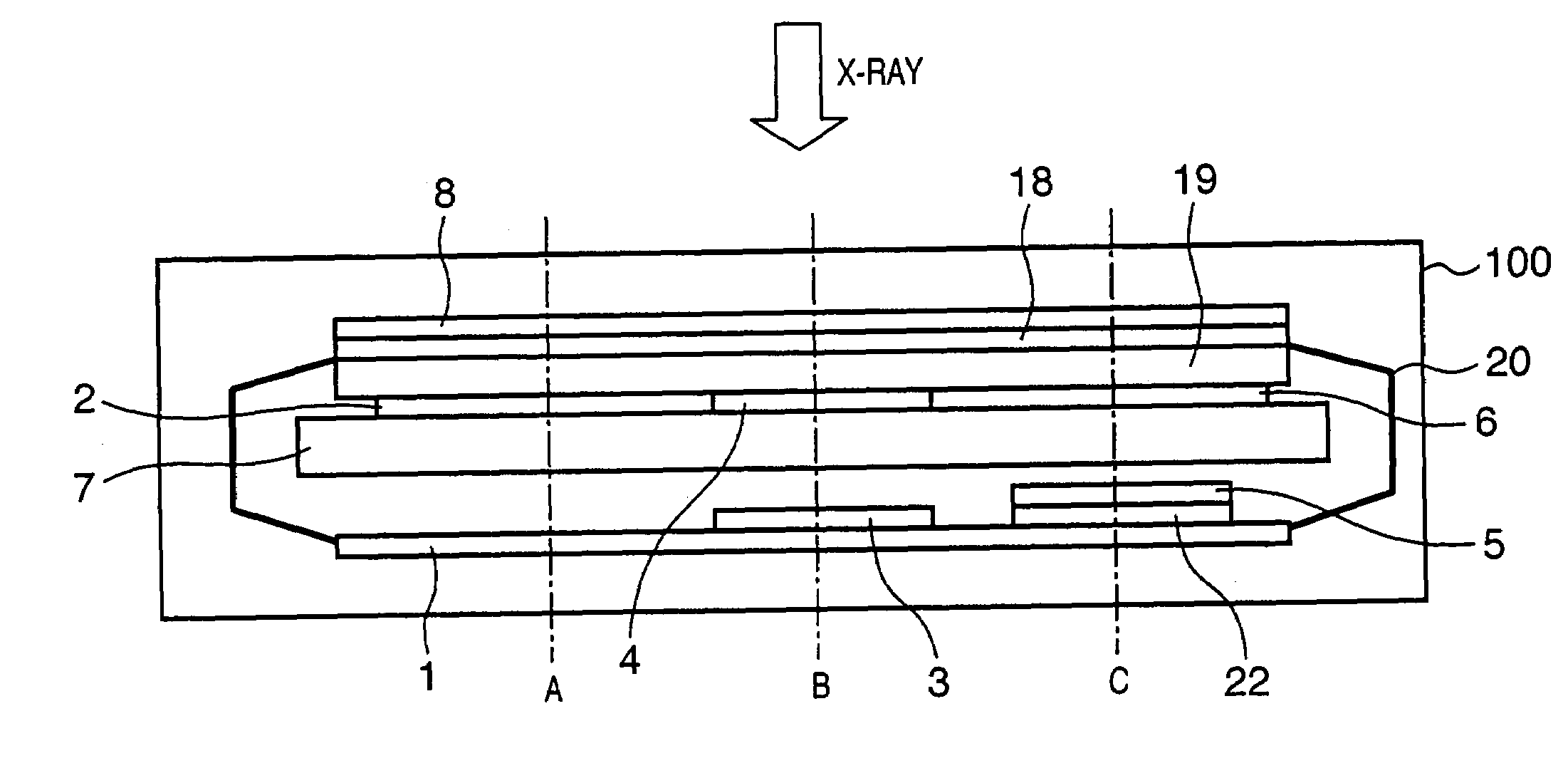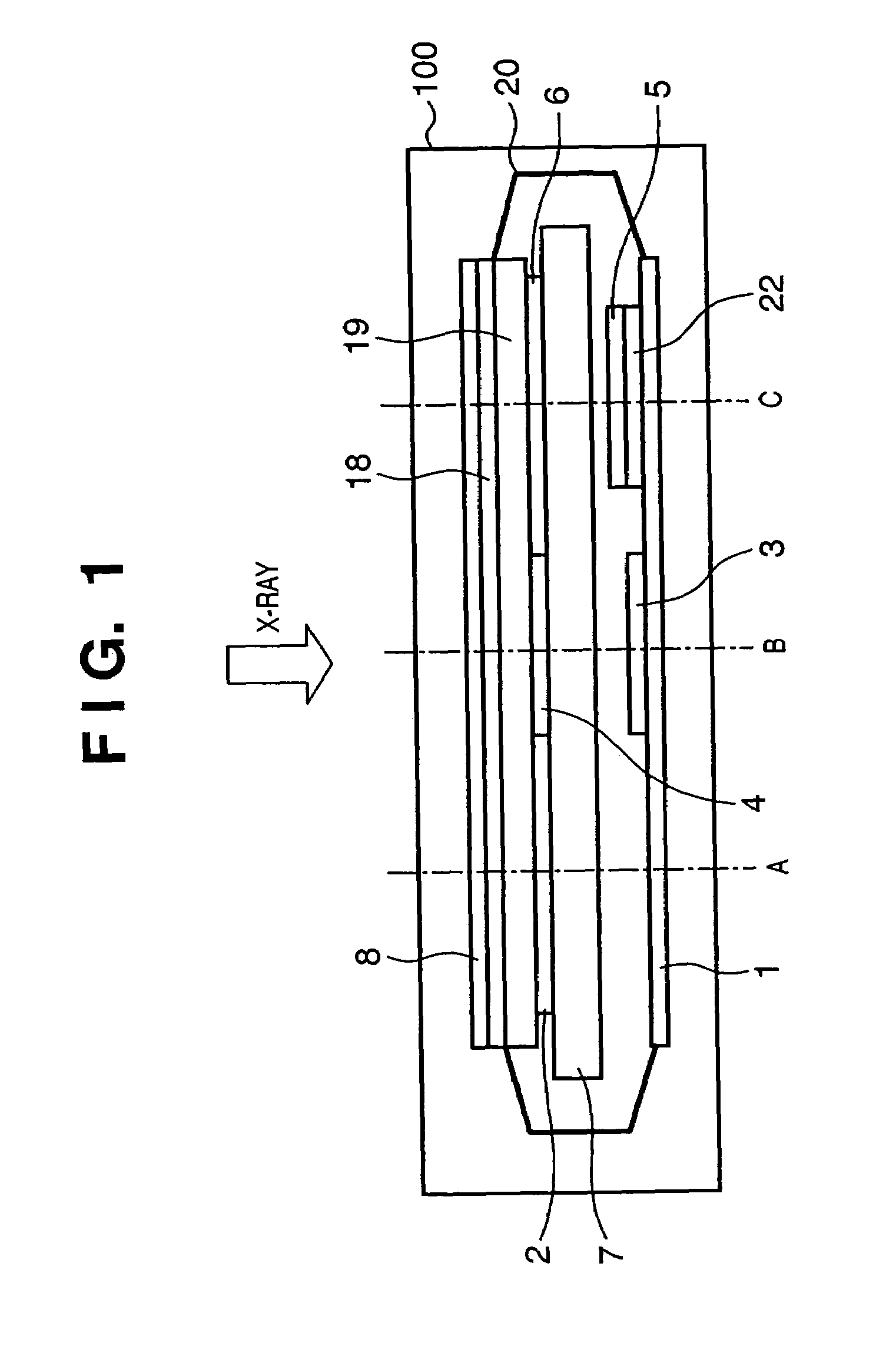Radiographic apparatus
a radiographic apparatus and apparatus technology, applied in the field of radiographic apparatus, can solve the problems of difficult handling, lack of rigidity, and complicating the structure of the apparatus, and achieve the effect of reducing backscattering and holding down the weight of the radiographic apparatus
- Summary
- Abstract
- Description
- Claims
- Application Information
AI Technical Summary
Benefits of technology
Problems solved by technology
Method used
Image
Examples
first embodiment
[0030]FIG. 1 is a diagram showing a schematic cross-sectional view of the structure of a radiographic apparatus according to a first embodiment of the present invention. It should be noted that constituent elements that are the same as those of the apparatus described in FIGS. 5–7 are given the same reference numbers, and a description thereof is omitted.
[0031]What is different from that shown in FIG. 6 is that an X-ray shield member using material that differs depending on the area is used instead of the X-ray shield member 21. In the example shown in FIG. 1, X-ray shield members 2, 4 and 6 are provided in areas disposed opposite the electrical circuit board 1, element 3 and protective layer 5, with the material of the X-ray shield members differing according to the positions of the elements. Materials are selected for the X-ray shield members 2, 4 and 6 so that the amount of scattered rays (the amount of backscattering) from the lower layer is approximately uniform.
[0032]FIG. 2 is...
second embodiment
[0038]FIG. 3 is a diagram showing a schematic cross-sectional view of the structure of a radiographic apparatus according to a second embodiment of the present invention. It should be noted that constituent elements identical to those described in FIG. 1 are given the same reference numerals, and a description thereof is omitted.
[0039]What is different from FIG. 1 is that the X-ray shield member has different thicknesses depending on the area. Specifically, a thin X-ray shield member 9 is provided for an area A disposed opposite the electrical circuit board 1, a intermediate X-ray shield member 10 is provided for an area B disposed opposite the element 3, and a thick X-ray shield member 11 is provided for an area C disposed opposite the protective layer 5, thus changing the thickness of the X-ray shield members depending on the disposition of the elements. The thickness of each of the X-ray shield members 9, 10 and 11 is varied so that the amount of scattered rays from the lower lay...
PUM
 Login to View More
Login to View More Abstract
Description
Claims
Application Information
 Login to View More
Login to View More - R&D
- Intellectual Property
- Life Sciences
- Materials
- Tech Scout
- Unparalleled Data Quality
- Higher Quality Content
- 60% Fewer Hallucinations
Browse by: Latest US Patents, China's latest patents, Technical Efficacy Thesaurus, Application Domain, Technology Topic, Popular Technical Reports.
© 2025 PatSnap. All rights reserved.Legal|Privacy policy|Modern Slavery Act Transparency Statement|Sitemap|About US| Contact US: help@patsnap.com



